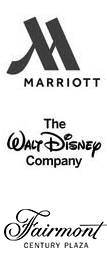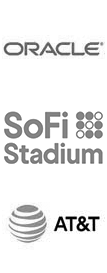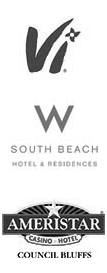Medical & Healthcare

There are numerous reasons why it is imperative to have reliable cellular coverage in the healthcare industry. Healthcare professionals are able to maintain a seamless connection with patients, families, and colleagues as a result of effective communication. This connectivity guarantees the rapid and precise exchange of information, which is essential for the provision of high-quality patient care.
Emergency services rely heavily on strong cellular coverage. It allows healthcare professionals to promptly reach emergency responders in case of a crisis, enhancing the safety and well-being of both patients and staff. This capability is crucial for timely interventions and efficient management of emergency situations.
In clinical and patient care, reliable cellular networks support various activities, including accessing electronic health records (EHRs), ordering tests, and reviewing diagnostic images. These functionalities are essential for healthcare providers to deliver comprehensive and efficient patient care, improving outcomes and streamlining operations.
Remote monitoring and telemedicine are increasingly important in modern healthcare. Robust cellular coverage facilitates these services, allowing healthcare providers to monitor patients remotely and conduct virtual consultations. This not only improves patient outcomes but also reduces costs by minimizing the need for in-person visits and enabling timely interventions.
Emergency response teams also benefit from strong cellular coverage, which supports effective communication and coordination during crises. This capability ensures that emergency teams can respond rapidly and efficiently, mitigating risks and enhancing patient safety.
A hospital cellular network is used for a variety of applications, including clinical communication, where healthcare providers use mobile devices to communicate with each other, access medical records, and coordinate patient care. Patient engagement is another critical application, as hospitals use mobile apps and devices to provide patients with information, track their health status, and facilitate communication with their care teams.
During emergencies, healthcare providers rely on mobile devices to communicate and coordinate a rapid response. Telemedicine is another vital application, as hospitals use cellular networks to support remote consultations with specialists, thereby providing patients with greater access to care. Medical device connectivity is facilitated by robust cellular networks, enabling real-time monitoring and control of devices such as heart monitors and infusion pumps.
Staff productivity is significantly enhanced by reliable cellular coverage. Healthcare providers can access information and resources, streamline work processes, and improve overall productivity using mobile devices. These applications require a robust and reliable cellular network to ensure that healthcare providers have access to the information and tools they need to deliver quality care.
However, several factors can contribute to poor cellular coverage in hospitals. The construction materials used in many hospitals, such as metal and concrete, can interfere with cellular signals and reduce coverage. The layout of hospitals, including walls, partitions, and elevators, can further obstruct signals, making consistent coverage challenging.
The use of electronic medical equipment, such as MRI machines and X-ray machines, can create interference that impacts cellular performance. Additionally, the high density of users in hospitals can lead to wireless network congestion, reducing coverage and increasing the risk of interference. Other wireless devices operating in the same frequency spectrum can cause spectrum interference, leading to dropped calls and reduced data speeds. Security considerations may also limit or block cellular signals, further impacting coverage.
These factors can disrupt cellular service in hospitals, making it difficult for patients, visitors, and staff to access reliable mobile services. This disruption can impact communication, productivity, and overall experience.
Addressing these challenges requires the expertise of specialized companies that can implement tailored solutions to enhance cellular coverage in healthcare facilities. By leveraging advanced technologies and industry best practices, these experts can ensure that hospitals benefit from robust and reliable cellular connectivity, supporting communication, patient care, and operational efficiency.
Our Clientele
Explore some of the great companies that RSS has worked with.
Why RSS?
The licensed wireless industry is intricate. Experience has been a part of Repeated Signal Solutions (RSS) from the company’s inception in 2004. Unlike our rivals, RSS has been active in the licensed wireless frequency market for 19 years and still represents the majority of our first clients nationally.
- 1
Financial Transparency
The RSS methodology has been demonstrated to put everyone at ease. This approach is the result of 19 years of expertise. - 2
Trust: 92%+ of Our Customers Are Recurring
Among licensed wireless services, RSS is one of the few that puts the client first. - 3
Respect and Understanding for All Stakeholders
To ensure that each party contributes for their use case, our process supports the creation of budgets for each group’s allocation of the system. - 4
Total Solution Experience
We offer end-to-end life cycles with the standard carriers SLAs starting at 10 years as part of our solutions.
Ready to Speak With Our Team?
RSS’ mission is to act on behalf of our customers and provide innovative methodologies and detailed solutions that meet their wireless coverage challenges. We strive to provide value propositions based upon ethical business approaches with a high level of transparency and communication which builds mutual trust, respect and a basis for replicable results in our products and services delivery.
Pete Bohley, President of RSS
























